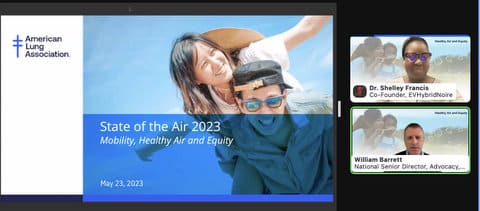25 Oct Community members provide input on Richmond’s Climate Action Plan
By: Wendi Jonassen | October 25, 2011 – Richmond Confidential
Richmond hosted its first public meeting on its Climate Action Plan Monday, asking for community input about environmental and community priorities and concerns before the city hires a consultant.
The consultant firm will be in charge of drafting and implementing policies targeted to address greenhouse gases, pollution and ground-level ozone that have the potential to affect the community in Richmond.
“Generally, we like to talk about the kind of policies and choices that are made to be those that get you benefits in addition to greenhouse gases emission reductions,” said Abby Young, principal environmental planner at the Bay Area Air Quality Management District.
One example: transportation. Adding more bike lanes will get residents out of cars, reducing greenhouse gas emissions, and will also provide the added health benefit of exercise.
Community members also stressed the importance of transparency at every level of the CAP and emphasized the need for community engagement.
Low-income communities and people of color are disproportionately affected by climate change while contributing to the least to the problem, said Urban Habitat Executive Director Allen Fernandez Smith.
These communities are already more susceptible to disease because of minimal access to health care and fresh foods, and have fewer resources to respond to environmental concerns and disasters, Smith said.
Richmond, for example, has much higher rates of asthma hospitalization for children under the age of 14 than in the rest of the county, Michael Kent, Contra Costa County’s hazardous materials ombudsman, pointed out in a presentation at last night’s meeting.
“One of the things that we need to think about is how do we develop policies that can meet that disproportionate setup because we can’t continue to recreate that cycle,” Smith said.
In Richmond, roadways, freight lines, port activities, heavy industries and refineries produce particulates, which are known to create serious air quality concerns and health impacts on the community.
“There are so many large sources of air pollution, that together they make a situation that needs attention,” Young said.
Richmond is also a host to Chevron’s largest west coast refinery, which is the second biggest contributor to greenhouse gases in the county, according to 2007 data compiled by the Bay Area Air Quality Management District.
“We can’t ignore that,” Mayor Gayle McLaughlin said.
As temperatures rise, some of the other concerns of climate change in Richmond include a greater chance of heat emergencies, fire, flood and water-borne disease.
There is also a potential for population displacement as the sea level rises and water encroaches onto Richmond’s coast and into the communities, Kent said.
Other commenters, like Tom Waller, a consultant for the Richmond Chamber of Commerce, spoke on behalf of business.
“I sometimes see raw ideological willfulness,” he said. “I hope to see a sense of balance, along with a clear and transparent articulation of costs and benefits, other than this general notion of quality of life and ‘we want to save the planet.’”






No Comments